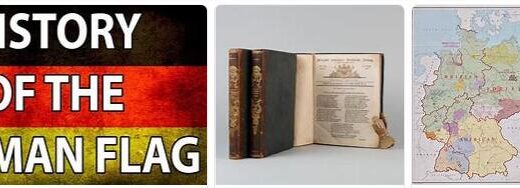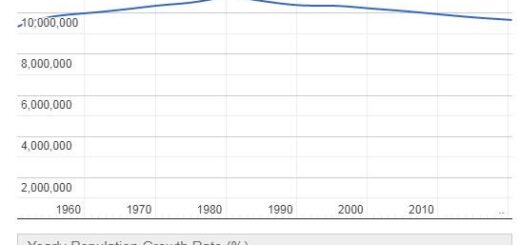Iceland in the 2000’s
Island state of northwestern Europe. According to official estimates, the Iceland in 2005 it counted 299,891 residents, with a density of 2.9 residents / km 2. The increase recorded in ten years is approximately 10 %, a trend which confirms a trend of long-term (the fifties of 20 ° sec.) And a sustained growth particularly from the nineties onwards. The area of greatest concentration remains that of the south-west coast, whose main centers, in the span of fifty years, have seen their population increase significantly: Reykjavik has doubled, slightly exceeding 114,000 residents, Kópavogur increased fifteen times (26,000 residents) and Hafnarfjördur of four (22,000 residents). However, some coastal stretches to the west and north-east of the island also show less sparse settlements. Overall, about 90 % of the population lives in centers that exceed 200 units.
The workforce amounted, in 2004, to 161,100 units and the employed to 156,100 (of which just over 47 % women), distributed in an amount equal to 6.4 % in the primary sector (agriculture and fishing), to 22.4 % in industry and 71.2%% in services. Alongside the traditional sectors of fishing and processing of fish products, the construction, electricity generation and metallurgical sectors (aluminum, ferro-silicon) contribute to diversifying the country’s economic structure. Furthermore, for some years now Iceland has been conducting advanced research on the industrial use of hydrogen as a fuel in conditions of environmental safety. The composition of the tertiary sector also appears to be quite articulated, and qualified by the presence of a significant percentage of employees in sectors such as financial intermediation, education and communications. The unemployment rate is very low (it does not reach 3 %);3.5 billion euro) in infrastructures, in the energy field (an area in which Italian companies are also involved) and in the metallurgical sector will, in the short term, further lower this figure.
From a macroeconomic point of view, Icelandic dynamics appear lively, marked by a marked liberalism and supported by a notable degree of openness towards foreign investment (in fact, there are numerous participations in groups, mainly European). The degree and diffusion of social well-being, also witnessed by a strong increase in private consumption, appear to be high. The residential construction sector also performed positively, driven by low interest rates and the growth in purchasing power.
GDP growth in the 2004-05 two-year period reached a peak (around 6%). The significant trade deficit, partly caused by the trend in the market for fish products (which represent 60 % of the country’s exports) as well as by the weight of imports (especially industrial supplies, investment goods), and the significant indebtedness with the abroad overshadow the positive economic scenario of the country, albeit partially.
The peculiarity of the natural environments and the intervention strategies to protect the landscape values undertaken by the government have favored the development of tourism and services connected to this sector. In fact, there are 4 national parks of considerable landscape, fauna and flora value, 14 regional parks, 39 reserves and 33 natural monuments (including volcanoes, hot springs, waterfalls). It is therefore not surprising that, according to sources from the Icelandic Ministry of Foreign Affairs, tourist presences have increased (about 1,500,000 overnight stays in 2004), with a constant increase in the number of passengers passing through airports (about 2,500,000) and in ports (about 45,000).
Politics
At the end of the 20th century. Icelandic political life continued to be characterized by the ten-year hegemony of the Independence Party, led by D. Oddsson according to a substantially conservative approach. In government in the 1991-1995 legislature with the Social Democratic Party and in subsequent ones with the Progressive Party (of moderate and centrist orientation), the Independence Party seemed to enjoy a broad consensus in public opinion thanks to a series of successes in foreign policy and in politics internal. On the international level, the Oddsson administration had distinguished itself for a firm line in the defense of Icelandic fishing rights – a line that had however negatively weighed on relations with Denmark and Norway – while on the domestic level, after the difficult previous decades, it had guaranteed to the country a new governmental stability, also strengthened by the good results achieved thanks to the policy of privatization and liberalization of the financial market adopted since 1991.
Following the electoral success of May 1999, which had seen it confirmed in its role as a relative majority party, the Independence Party returned to government, again under the leadership of Oddsson and with the participation of the Progressive Party. In the subsequent elections of May 2003, the center-left opposition, grouped in the Alliance (born in 1999 as an electoral cartel of the People’s Alliance, Social Democratic Party, People’s Movement and List of Women, in May 2000 had become a party), the mayor of Reykjavik, Iceland Sólrún Gísladóttir, was running for prime minister. But, despite the popularity enjoyed by the Alliance candidate (already in her third consecutive term as mayor of the capital), the Independence Party regained the relative majority of votes and seats, despite suffering a significant decline (33.7 % and 22 seats, compared to 40.8 % and 26 seats in 1999), and renewed once again the ruling coalition with the Progressive Party, which had remained essentially stable (17.7 % and 12 seats, against 18.4 % and 12 seats in 1999). Alleanza, for its part, reached 31 % of the votes and 20 seats (26.8 % and 17 seats in 1999), while the smaller parties, the environmentalist Left-Movimento Verde, born in 1999 (5 seats, 1 more), and the Liberal Party (4 seats, 2 more). In June 2004 Ó.R. Grímsson was re-elected for his third term as President of the Republic, despite criticism a month earlier about using the presidential veto against a media law just approved by Parliament. In September of that same year, according to the electoral agreement signed by the two parties of the coalition at the time of the formation of the government, Oddsson resigned as prime minister in favor of the leader of the Progressive Party H. Ásgrímsson, assuming in compensation for himself the post of Foreign Minister (from whom he would resign in September 2005). Once the handover of power was completed, the policy of the new government seemed to enter a line of continuity with the previous governments, even if the new prime minister had already repeatedly shown greater openness towards the country’s entry into the European Union. In October 2005 however, the country was witnessing a massive strike by women, employed above all in the service sector, who demanded wage parity, denouncing an average difference with men’s salaries of around 26 %. On the other hand, the new administration aroused harsh criticism from public opinion and from some members of the government structure itself, who accused it of having caused an excessive expansion of public spending on welfare (March 2006).
On the international level, at the end of the nineties a series of negotiations were opened with the United States to renegotiate their military presence on Icelandic territory: installed since 1951, it constituted the only military force available to the country. Following the attacks of 11 September 2001, however, the agreement for a progressive reduction of troops and military assets was postponed to the formulation of a more general review of the military role of the United States throughout Europe. But in March 2006 between Iceland and the USA a difficult crisis opened after the unilateral announcement by the US of an imminent withdrawal of its military forces from the country, as a consequence of the new international security framework. In 2002 the Iceland inaugurated political, economic and cultural cooperation agreements with Russia, while the dispute over fishing rights, perhaps the most important issue for the country’s economy, seemed not to find definitive solutions, especially as regards relations with Denmark and the Norway.



